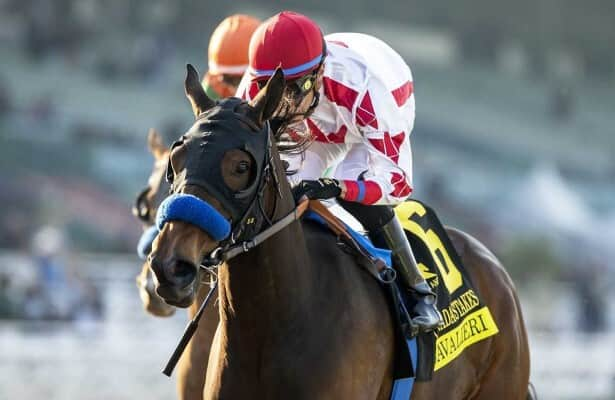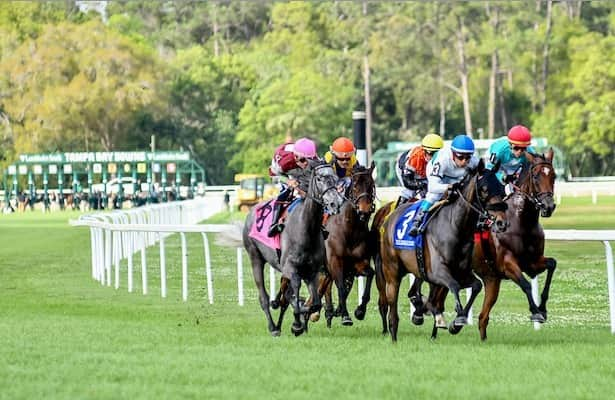Deseret News archives: Saga of Seabiscuit found the winner’s circle

A look back at local, national and world events through Deseret News archives.
The “Race of the Century.” Nowadays, sports fans would call it an “Instant Classic.”
On Nov. 1, 1938, in a two-horse match race, Seabiscuit defeated the favored Triple Crown winner War Admiral by four lengths in what was dubbed the “Race of the Century” at Pimlico Race Course in Baltimore.
War Admiral, sired by the never defeated legend Man o’ War, was smaller and different than his legendary father, but still an amazing thoroughbred. In 1937, War Admiral won his first three starts, the final race being the Kentucky Derby, After winning his first two starts of the year, The Admiral did the one thing Man o’ War did not — he won the Kentucky Derby.
At the time, winning the Triple Crown — Kentucky Derby, Preakness, and Belmont — wasn’t a major goal. But as the summer wore on, War Admiral racked up the wins and was named Horse of the Year.
America had its fourth Triple Crown winner, who won 18 off 22 starts in his career.
There was tremendous public demand throughout 1938 for a match race between War Admiral and Seabiscuit, the hero of the West Coast. Racing’s two biggest drawing cards finally met in the Pimlico Special on Nov. 1.
The 4-year-old War Admiral was a heavy favorite over the 5-year-old Seabiscuit, the champion handicapper of 1937. A grandson of Man o’ War, Seabiscuit had risen from the claiming ranks to win the hearts of racing fans everywhere.
The Biscuit, as he was often called, lost the first 17 races of his career, but as a 4-year-old started to win races, winning 31 races in his career.
An estimated 40,000 fans flooded Pimlico Race Course for the event and some 40 million more listened to the national radio broadcast.
The Deseret News brought its readers race previews and results in late October and November.
It was Seabiscuit’s day. Per reports, “the Biscuit broke alertly from the walkup start and settled nicely under Hall of Fame rider George “The Iceman” Woolf. Kurtsinger eventually brought War Admiral alongside Seabiscuit at the half-mile pole and even briefly took the lead, but Seabiscuit pulled away to win by four lengths in track-record time.”
In the early 2000s, a movie of the racehorse and the race was a resounding hit with audiences.
Seabiscuit returned to California to live out his life on the farm where he started.
Here are some stories from Deseret News archives about the race, the thoroughbred from the West who captivated the public’s attention in 1938, and the movie that immortalized the horse:
“Seabiscuit craze off and running”
“California town mining fame of old resident: Seabiscuit”
“Utahns creating statue of Seabiscuit”
“‘Seabiscuit’ actor leaves hospital in good condition”
“Horse power: Beloved equines, associated costs add up to big industry in Utah”
Related
Leading Parx jockey Sanchez will serve 7-day suspension
Photo: Jason Moran / Eclipse Sportswire Jockey Mychel Sanchez will serve a seven-day suspension and pay an additional $1,750 in fines
Bill Mott talks about plans for Sovereignty, Just F Y…
Photo: Gulfstream Park / Lauren King Sovereignty, dramatic late-running winner of the Fountain of Youth (G2) March 1, is being pointed
Up-and-coming Cavalieri chases Grade 1 glory in Beholder Mile
Photo: Santa Anita / Benoit Photo Cavalieri and Alpha Bella, who finished one-two in the Grade 3 La Cañada in January at Santa Anita,
4 stakes showcase shipping stars on Tampa Bay undercard
Photo: Gonzalo Anteliz Jr. / Eclipse Sportswire The stars will shine Saturday at Tampa Bay Downs, and not just in the Grade 3 Tampa Ba











